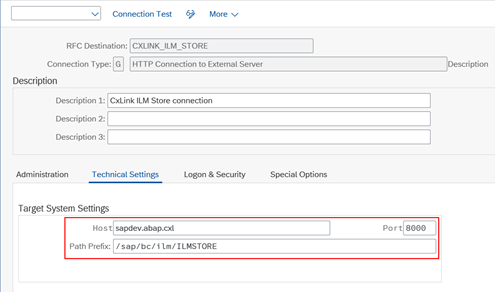Retaining, storing, retrieving and deleting data—down to the level of individual customers or users, in some cases—is a constant, growing challenge for organizations in every industry. No organization can keep data forever. Inevitably, old information eventually needs to be archived, purged, or deleted, but companies can’t do so on a whim. Customers must approach Information Lifecycle Management (ILM) very carefully to both meet business needs and stay compliant with relevant data retention and data privacy rules and regulations.
This article provides an overview of Syntax CxLink for ILM, a new capability now available on AWS Marketplace that enables SAP users to leverage Amazon Simple Storage Service (Amazon S3) for their ILM needs and enhancing their SAP on AWS experience. The blogpost also includes a guide to configuring the product.
Before we explore further, let’s highlight some key use cases that businesses are currently facing, where leveraging SAP on AWS with CxLink for ILM can offer significant benefits:
- Data Retention and Storage Requirements: Companies need to define the duration for which transaction, customer, vendor, or other types of data should remain in their database before it can be archived or restricted. Additionally, they must establish how long this data should be retained before it is safely disposed of.
- Management of Personal Data: Depending on local regulations, organizations may be required to restrict access to or delete personal data once the specific, legitimate purpose for processing it has been fulfilled—unless there are other legal retention periods (e.g., for financial records).
- Audit and Compliance Data: Organizations may also need to categorize, store, and retrieve data in specific audit areas tied to key business functions. Examples include retaining information to meet tax compliance requirements or managing product liability data for potential product recalls or warranty claims.
Syntax CxLink for ILM: Integrating SAP with Amazon S3
Syntax CxLink for ILM serves as a vital middleware solution, enabling SAP users to efficiently manage their data throughout its entire lifecycle with Amazon S3. As a certified WORM (Write Once, Read Many) object storage service, Amazon S3 delivers exceptional scalability, security, availability, and performance, making it an ideal choice for organizations seeking reliable data management.
SAP ILM is a powerful tool that Syntax leverages to allow businesses to harness the capabilities of SAP on AWS, automating data management processes in compliance with internal policies and regulatory standards. This includes ensuring adherence to data retention, privacy, and destruction requirements. By leveraging SAP ILM, organizations can store data securely in the cloud, boosting performance while meeting critical regulatory needs, such as the EU’s General Data Protection Regulation (GDPR)—especially in terms of data retention and the “right to be forgotten.”
Syntax CxLink for ILM is also an SAP certified product compatible with SAP S/4HANA Cloud, private edition and works with RISE with SAP using standard integration technologies.

Using Syntax CxLink for ILM: What you’ll Get
- Consistent, Rule-Based Document Retention: With Syntax CxLink for ILM, organizations can confidently implement SAP ILM’s automated data management rules across all documents and data—whether stored within SAP or on Amazon S3—ensuring compliance and consistency throughout the data lifecycle.
- Access to Leading-Edge Innovation: By integrating with Amazon S3, Syntax CxLink for ILM enables businesses to leverage the broader AWS ecosystem. This includes accessing new AWS services and features such as Data and Analytics solutions for building data lakes, AWS AI and machine learning tools for uncovering actionable insights, and AWS generative AI services to enhance customer support and more.
- Cost-Effectiveness and Operational Efficiency: Syntax CxLink for ILM offers a cost-efficient way to manage data on Amazon S3. Compared to traditional storage methods, Amazon S3 can reduce costs, while its high performance ensures that businesses can quickly retrieve and manage data within their SAP applications.
Configuration Steps for Syntax CxLink for ILM
To configure Syntax CxLink for ILM and leverage SAP on AWS, please follow these steps:
Step 1: Activate Business Functions

- Open the SAP Implementation Guide.
- Under SAP Customizing Implementation Guide, select Activate Business Functions.
- Select ILM and ILM_STOR and ensure they are activated.
Step 2: Create RFC
Create an RFC of type G, pointing to the previously activated SICF service. To ascertain the host and port:
- Refer to the transaction SMICM
- Navigate to the SAP menu: Goto→ Services
- Retrieve the host name and service port for the HTTP protocol.
Finally, enter the path of the previously created service (e.g., /sap/bc/ilm/ilmstore).

Step 3: Create Administrative Origin
Next, create the sources and their standard configuration. The test sources (archeb* and arthurdent*) are created using the report RILM_STOR_TEST_SM69. This report generates the data in the table TILM_STOR_CUS.
Step 4: Establish Relationship with ILM Store
Access the Syntax Cxlink for ILM with the transaction /LNKAWS/IMG_ILM_STOR and establish a relationship between the administrative origin and the desired storage resource.

To do this:
- Click the New
- Add the relationship between the AWS Source and the AWS Bucket.
- Click the Next button to display a summary.
- Once you have confirmed the information, click the Create button to add it to the list.

Step 5: Check Configuration
Once the data has been created, click the Check button to ensure everything is configured correctly. After saving, you can now use ILM by default and view the data stored in the AWS portal in Amazon S3.

Next, use the transaction ILMSTOREADM to create an ILM Store. Enter a description and set the name of the previously created RFC.

Conclusion
In this article, we explored how Syntax CxLink for ILM empowers SAP ILM users to leverage Amazon S3 as a secondary storage solution for SAP data on AWS – a topic that was also recently featured on the AWS Partner Network Blog. This integration allows businesses to apply SAP ILM’s automated data management rules for archiving and deleting data stored either in SAP or Amazon S3—while ensuring compliance with data retention and destruction policies.
By utilizing Syntax CxLink for ILM with Amazon S3, organizations can achieve greater cost savings, improved operational efficiency, and enhanced performance. Additionally, this solution opens the door to innovation by enabling seamless integration with other AWS services and capabilities.
Syntax CxLink for ILM is available as a subscription service through the AWS Marketplace, part of the CxLink Suite from Syntax. It includes premium support to ensure proper setup, ongoing maintenance, and timely updates for your installation.
If your business is looking to use Amazon S3 as secondary storage for SAP ILM, and take advantage of the scalability, reliability, and advanced capabilities of SAP on AWS, Syntax CxLink for ILM is the ideal solution.
Find out more information about this solution and the rest of CxLink products to enhance your SAP on AWS today with real customer references https://www.syntax.com/software/cxlink/


